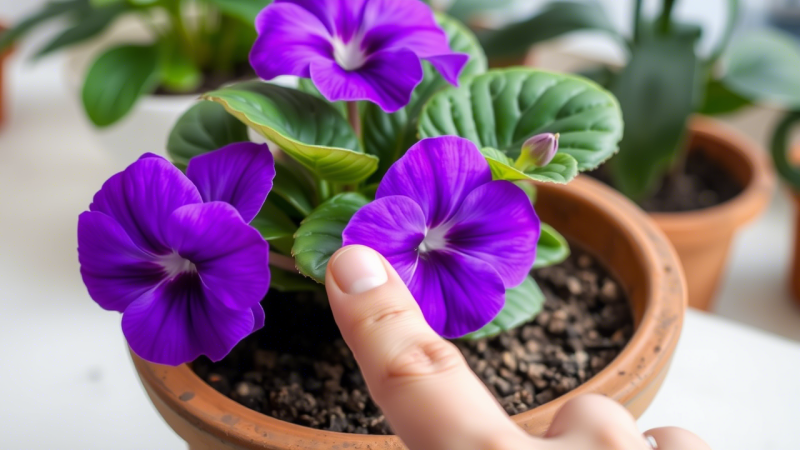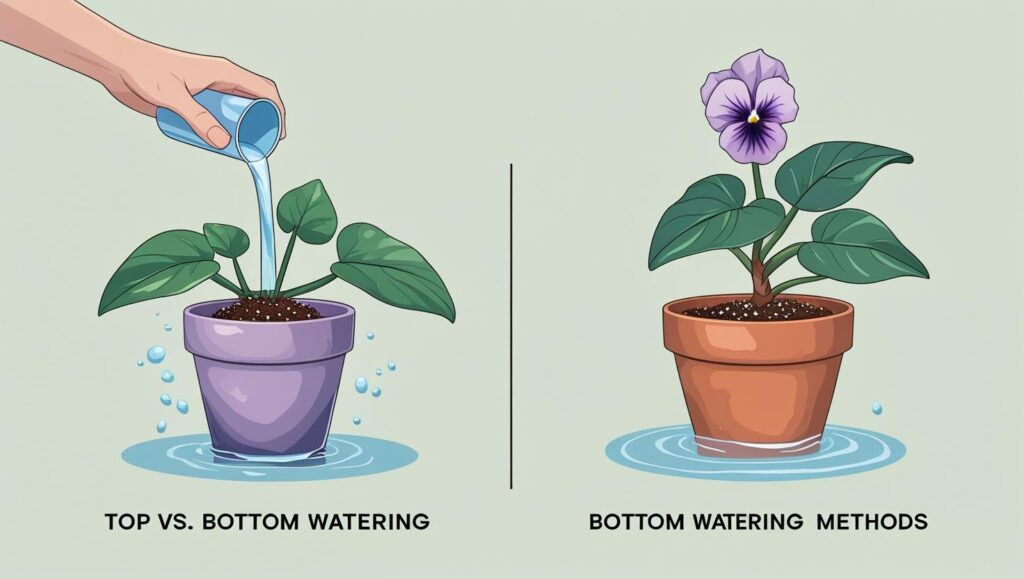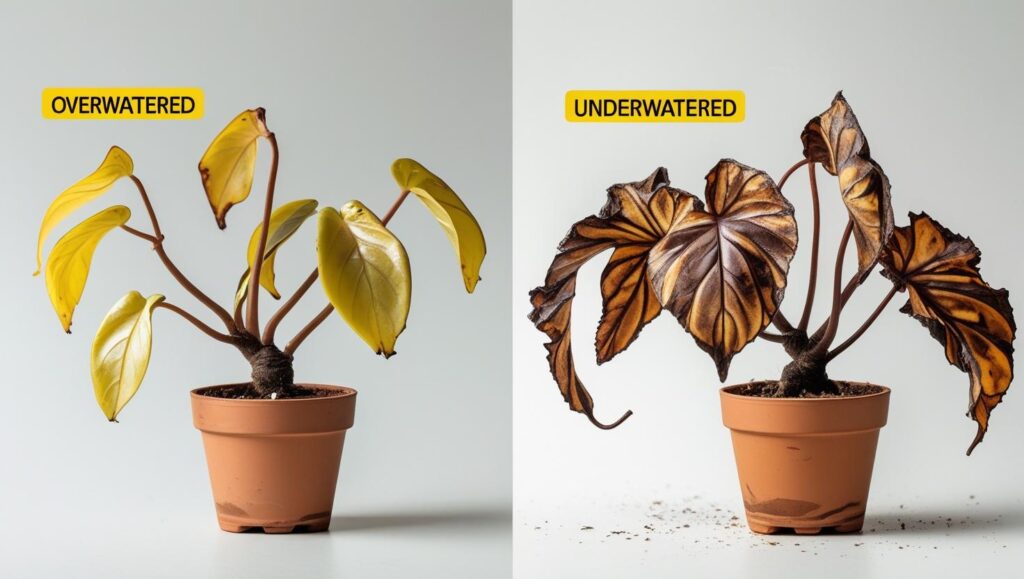For countless houseplant enthusiasts, the African violet offers vibrant color year-round, yet its care can seem perplexing. The central question of how often should you water a violet does not have a one-size-fits-all answer. Instead, horticultural experts agree that proper watering is a science of observation, dependent on the plant’s environment and needs rather than a rigid schedule.

Key Insights on African Violet Watering
| Key Principle | Detail |
| Check Soil First | Water only when the top inch of soil feels dry to the touch. |
| Method Matters | Bottom watering is highly recommended to prevent crown rot and leaf spotting. |
| Water Temperature | Always use room-temperature or lukewarm water to avoid shocking the roots. |
| Recognize Distress | Limp, mushy stems indicate overwatering; wilted leaves signal underwatering. |
Understanding the “When”: Moving Beyond a Rigid Schedule
The most common mistake in African violet care is adhering to a strict watering calendar, such as once a week. Environmental factors including humidity, light, room temperature, pot type, and soil composition directly influence how quickly a plant uses water.
“The single most common error we see is growers watering on a fixed schedule, regardless of the plant’s actual needs,” said Dr. Meredith Klein, a horticulture specialist. “An African violet’s water requirements can change season by season, or even week by week.”
Experts from the University of Georgia Extension advise that the most reliable method is the touch test. To perform this, a grower should insert a finger into the soil up to the first knuckle. If the soil feels dry, it is time to water. If it feels moist, it is best to wait and check again in a day or two. This observational approach prevents the leading cause of African violet failure: root rot from overwatering.
How Often Should You Water a Violet? The Method is Crucial
The technique used for watering is as important as the frequency. The delicate, fuzzy leaves and central growing point (the crown) of an African violet are highly susceptible to damage and rot if they remain wet.

Top Watering
If watering from the top, it must be done with care. Use a watering can with a narrow spout to apply water directly to the soil surface, taking great pains to avoid splashing the leaves or the central crown. Any water that collects on the leaves can cause unsightly spots and can lead to fungal diseases. Allow the pot to drain completely after watering and discard any excess water from the saucer.
Bottom Watering: The Preferred Method
The vast majority of horticulturalists and organizations like The African Violet Society of America (AVSA) recommend bottom watering. This method allows the plant to absorb water at its own pace, encourages stronger root systems, and eliminates the risk of water damage to the foliage and crown.
To bottom water:
- Fill a saucer or tray with about one inch of room-temperature water.
- Place the violet’s pot into the saucer.
- Allow the plant to sit for 20-30 minutes. The soil will draw water up through the drainage holes via capillary action.
- Once the soil surface is moist to the touch, remove the pot from the saucer.
- Let the pot drain for a few minutes to release any excess water.
This method of watering African violets ensures that the entire root ball is evenly hydrated without waterlogging the soil.
Diagnosing Common Watering Issues
Learning to read the plant’s signals is essential for its long-term health. Both overwatering and underwatering produce distinct symptoms.
Signs of Overwatering:
- Soil is constantly soggy or wet.
- Leaves appear limp, yellow, and feel mushy.
- The crown and stems become soft and brown (crown rot).
- A lack of new growth or flowers.
Signs of Underwatering:
- Leaves are wilted and droopy but do not feel mushy.
- Flowers may dry up and drop prematurely.
- The soil pulls away from the sides of the pot.
- The entire plant feels light when lifted.

Water Quality and Environmental Factors
The type of water used is also a critical component of African violet care. Experts at the Missouri Botanical Garden advise against using softened water, as the sodium it contains can be toxic to the plants over time. Distilled, filtered, or rainwater are ideal. If using tap water, it is beneficial to let it sit out for 24 hours to allow chlorine to dissipate and for the water to reach room temperature. Cold water can shock the plant’s root system and cause leaf spotting if it touches the foliage.
Furthermore, the plant’s container and soil mix play a significant role. Porous terracotta pots allow soil to dry out faster than plastic pots. A light, airy potting mix specifically formulated for African violets will provide the necessary aeration and drainage to prevent waterlogging.
As the seasons change, so will a violet’s watering needs. Plants typically require more water during periods of active growth in the spring and summer and less during the shorter days of fall and winter. Adjusting the frequency of the “touch test” based on these factors is the key to sustained success.
8 Fast-Growing Ground Covers That Fill and Keep Your Garden Looking Gorgeous
